|
上苑2013年澳洲駐館藝術(shù)家陳平入選《2013年威尼斯雙年展的主要國(guó)際藝術(shù)展〉〉
[2013-5-19 10:43:50]
上苑2013年澳洲駐館藝術(shù)家陳平入選《2013年威尼斯雙年展的主要國(guó)際藝術(shù)展》
“時(shí)間-空間-存在#2”(荷蘭世界藝術(shù)事務(wù))

彩虹,樹(shù)林,猛獸,人,2013,油畫(huà),180 x 210 cm

南極光,紅綠鳥(niǎo),紅鳥(niǎo),猛獸,人,2013,油畫(huà),180 x 210 cm
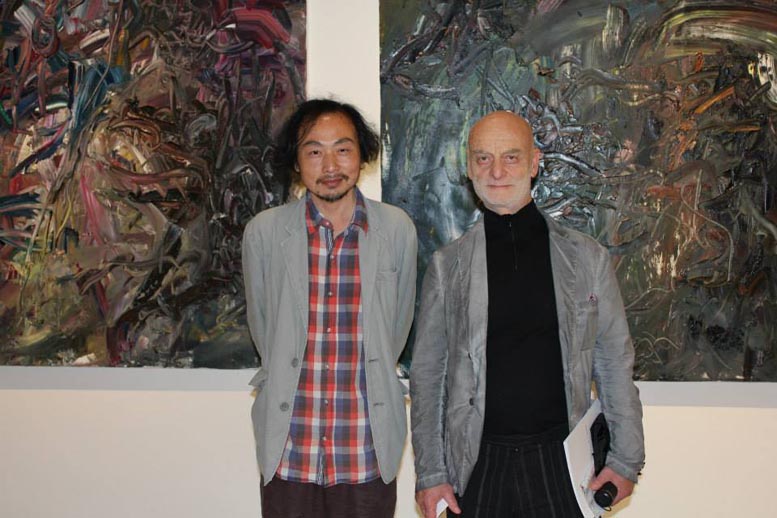
陳平在威尼斯與著名瑞士收藏家希克

意大利威尼斯博本宮
Artist Statement: Unseen Forest
Chen Ping
Ancestor Di Jun was a god with the head of a bird, the bodyof a monkey and only one leg. There was a country in which the people all hadone head and three bodies. These were Di Jun’s children; He had another tensons who came out one at a time after washing in the south-east sea and thentook turns to work as the sun in the sky; He also had twelve daughters who werethe moons, they always bathed in the remote west and took turns to come out atnight. Occasionally, Di Jun came down to meet the five coloured birds in theeast valley. They danced joyfully. In the ancient Chinese myth, the creator ofthe world, Pan Gu, had the head of a dog and the body of a human. Nu Wa, thegoddess who created humans, had the face of a woman and the body of a snake.The first king, Huang Di, was a bird, with four wings and six legs. There wasalso a god of the ocean and wind, and he was sometimes a fish with a human faceand sometimes a bird.
These great majestic creatures, once the carriers of thehuman spirit, are now nowhere to be seen. Their forests have been lost. Sincethe dream of communism shattered, we have turned ourselves into hungry hunters ofa concrete reality, and our souls have been transmuted.
I traverse among spirit, illusion and reality; mingle manwith landscape and animals. This is where I could once again let my spirit fly.Looking down, I increasingly disengage from politics and society.
“The phoenix has never come in the sky, the picture hasnever appeared from the river, and yet my life is near the end!”(Confucius)
Catalogue Essay: The Artist & the Threshold
JamesArvanitakis
Thecontemporary world is one of contradictions: globalization is accompanied byaggressive nationalism; militant religious movements emerge within secularstates; scientific rationalism makes us desire enchantment and meaning in nature.
Staring at Chen Ping’s ethereal paintings such contradictions emerge:while one part of the artwork is busy, congested, verging on exhausting, otherparts are composed, calm, contemplative. Looking at the works, we see astructures being constructed while simultaneously feel a melting away, like agentle wave running over a sand castle.
The works representthe language of paint, not a classification of the abstract/ classical, East/Westor unadulterated human or uncontaminated nature.
The workscapture the simultaneous connection and disconnection between humanity andnature that Ping identifies as his motivation.
Ping highlightsthat nature is not separate from us: it is not ’over there’. Rather, ourrelationship with nature is everywhere, both precarious and robust: from theTasmanian wilderness, to the Himalayas, large urban centres, and even the artgalleries that hang such works.
This is keyto Ping’s work: we might think that we can disconnect ourselves from the world,but across space and time, both our quality of life and very existence, dependson this relationship.
The controversialGerman philosopher, Martin Heidegger, described the concept of the ’threshold’:the moment we move from a state of ignorance to reflection. Here we look aroundand see the world with fresh eyes and identify what is most important: ourhumanity and the essence of the relationships we build.
Once wecross this threshold, the world is different: more beautiful, intense, full ofincreasing insight and emotions.
Heideggerargued that it is the artist who can guide us through the threshold: poets,musicians, painters.
Chen is aunique artist who defies definition and can guide us through thethreshold: showing the world in a different way.
2013年駐上苑藝術(shù)館創(chuàng)作的作品:
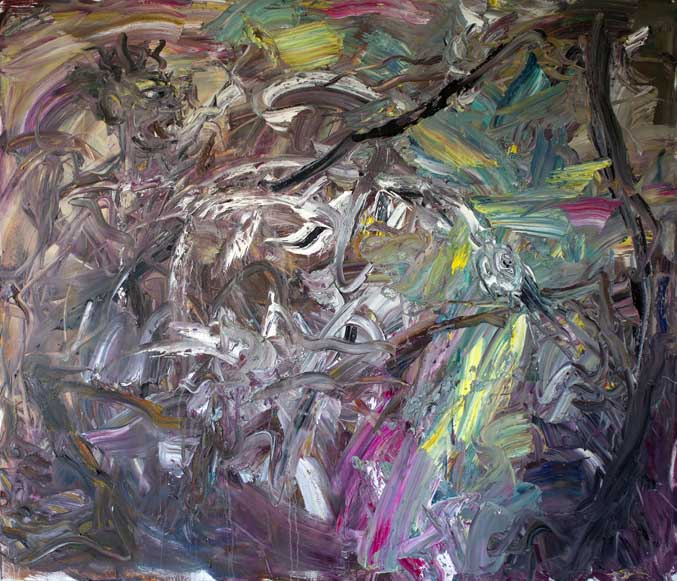
陳平,彩虹,斷樹(shù),白鳥(niǎo),人,2013,油畫(huà),180 x 210 cm.
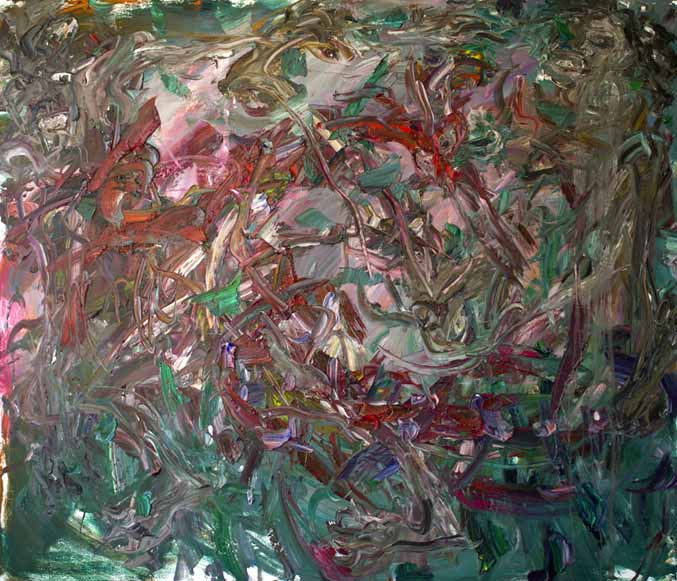
陳平,落葉,紅鳥(niǎo),男人,女人,2013,油畫(huà),180 x 210 cm.
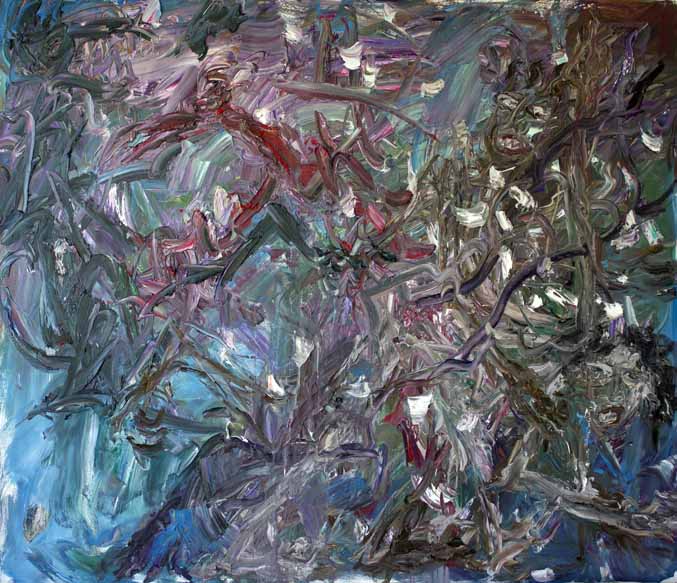
陳平,樹(shù),落花,紅鳥(niǎo),2013,油畫(huà),180 x 210 cm.
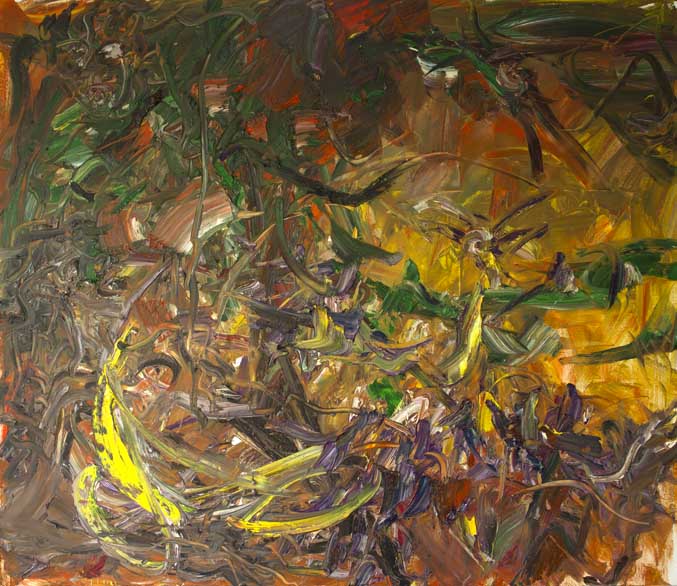
紅光,樹(shù),黃紫鳥(niǎo),綠鳥(niǎo),男人,女人,2013, 油畫(huà),180 x 210 cm.
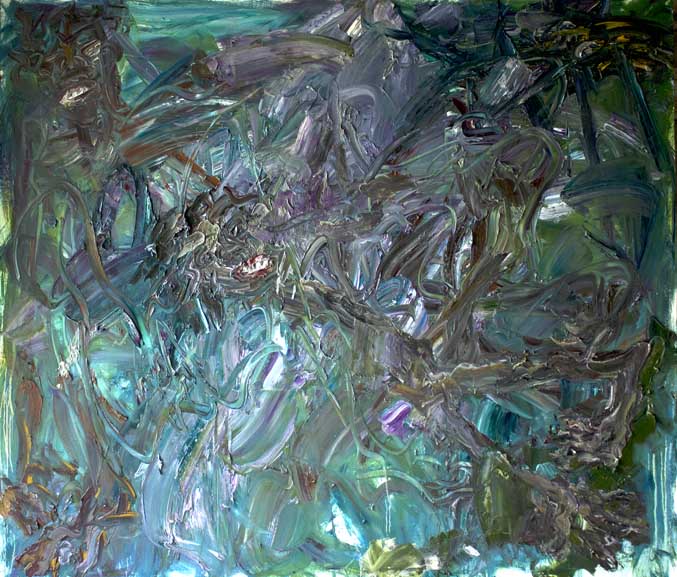
月光,黃鳥(niǎo),男人,女人,2013,油畫(huà),180 x 210 cm.
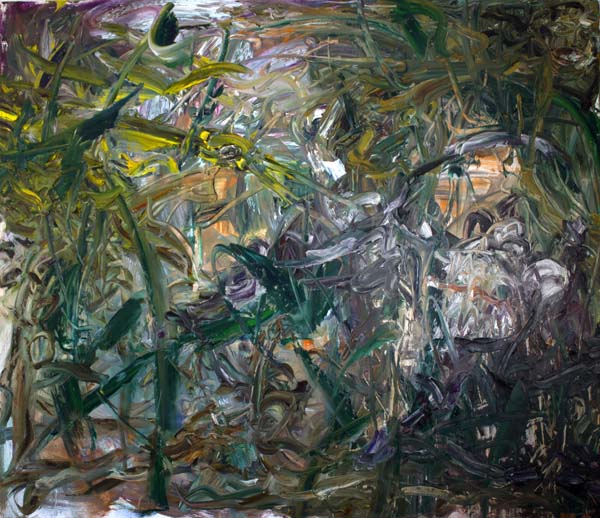
不見(jiàn)森林
陳平
始祖神帝俊是一個(gè)單腳鳥(niǎo)頭猿身的怪物。生了一個(gè)三身國(guó),其國(guó)民都是一頭三身;他的另外十個(gè)兒子是太陽(yáng),常在東南海的甘洲洗澡后,輪班白天去工作;還有十二個(gè)女兒是月亮,卻常在西方荒野洗澡后,輪班晚上去工作。帝俊時(shí)常下天到東方荒野與五彩鳥(niǎo)聚會(huì),在這里,他們翩翩起舞。中國(guó)神話(huà)里,開(kāi)天辟地的盤(pán)古是狗頭人身;創(chuàng)造人類(lèi)的女?huà)z是人頭蛇身;始祖神黃帝是一只六腳四翼的神鳥(niǎo);而海神兼風(fēng)神禺強(qiáng)有時(shí)是人臉魚(yú)身,有時(shí)變?yōu)轼B(niǎo)身。
這些承載著我們靈魂的偉大的神物已經(jīng)遠(yuǎn)去,那些森林也不再存在。徘徊于精神,幻覺(jué)和現(xiàn)實(shí),交錯(cuò)于人,鳥(niǎo)獸和風(fēng)景,我靈魂再次得到升華;俯視社會(huì)和政治,我日益與之絕決。“鳳鳥(niǎo)不至,圖不出河,吾已矣乎。”(孔子)
藝術(shù)家和門(mén)檻
詹姆斯 阿凡尼塔斯基
當(dāng)今是一個(gè)沖突的世界:全球化進(jìn)程帶來(lái)了強(qiáng)烈的民族主義;憲政國(guó)家里宗教武裝運(yùn)動(dòng)此消彼起;科學(xué)進(jìn)步論反而促使我們尋求返樸歸真。
凝視陳平的作品,我們看到了類(lèi)似的沖突:畫(huà)面里有時(shí)紛亂,擁擠到難以喘氣,有時(shí)冷靜,深思而有序。它的結(jié)構(gòu)在建立的同時(shí)也在消溶消失,像海浪緩緩地沖洗著海灘上沙筑的的堡壘。
他的作品是關(guān)于純粹的繪畫(huà)語(yǔ)言,無(wú)關(guān)抽象或?qū)憣?shí),無(wú)關(guān)東方或西方,不在潔人與凈土。
陳平看到了人與自然既相依又相殘的矛盾,并準(zhǔn)確地在作品里展示出來(lái)。這里,自然與人是一體:它不是“在那里”,相反,我們與自然相依相存是無(wú)處不在,既風(fēng)雨又同舟:從塔斯馬尼亞到喜瑪拉雅,到大都會(huì),甚至到掛這些畫(huà)的畫(huà)廊。
我們或許有時(shí)會(huì)認(rèn)為能凌駕于自然,但在這時(shí)間和空間里,我們的生活質(zhì)量乃至生命,完全依賴(lài)于自然。這就是陳平作品的解讀。
有爭(zhēng)議的德國(guó)哲學(xué)家馬丁 海德格爾在闡述“門(mén)檻”的概念時(shí)說(shuō),當(dāng)我們從愚昧變?yōu)榉此紩r(shí),會(huì)用新鮮的眼睛看世界,會(huì)體會(huì)什么才是最重要的 – 人道和我們已建精神的聯(lián)系。
一旦我們跨過(guò)這一門(mén)檻,這是一個(gè)不同的世界:更美麗,更精彩,更內(nèi)在和更具有情感。
海德格爾堅(jiān)稱(chēng),只有藝術(shù)家如詩(shī)人,音樂(lè)家和畫(huà)家才能帶我們跨過(guò)這門(mén)檻。
陳平是個(gè)難得的藝術(shù)家,敢于藐視成見(jiàn),可帶我們跨過(guò)這門(mén)檻:他呈現(xiàn)了一個(gè)不同的世界。
查看28447次
|
